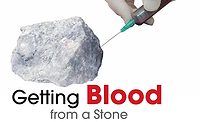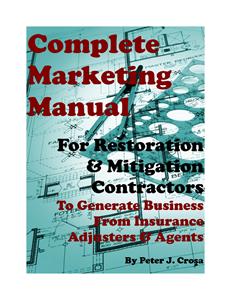Fishing for Ways That Restorers Can Fight Inflation

Photo credit: grandriver / E+ via Getty Images
During a recent family vacation in Captiva Island, Florida, several economic impacts became apparent. There was the obvious increase in the cost of food and beverage services, transportation, and entertainment. And, despite resorts and vacation rentals being at or near capacity, we never waited in line for a restaurant. This was extraordinary on several levels, not the least of which was because dining on the island is always underserved at that time of the year. This told me that vacationers were choosing to eat in rather than out. They were making adjustments based on their vacation budget.
My thoughts on the economic impact were reinforced by our faithful charter boat captain and long-time friend, Captain John Houston of Native Guides Fishing Charters. After fishing with Captain John and his partner for over 12 years, I always look forward to having conversations about our children, life experiences and, of course, business. In addition to being a fishing guide, John has several ventures on the island and in Costa Rica. His title might be Captain but he is an entrepreneur at heart. When the conversation this year shifted from the snook we were catching to the rising cost of fuel, he had my attention.
With the cost of fuel on the water nearly double what it was last year, I asked him how his business was being impacted. Fuel is the single largest variable cost associated with fishing charters and without switching to solar powered marine engines, the only option is to raise prices. However, there was more to it than that. As he continued to explain, they don’t just rely on the charter fee but also the cash tips that go along with it. Most consumers have a number in their head of how much they are going to spend on a fishing charter (fee and tip combined) and that’s all they are going to spend. Consequently, the higher the fee, the less the tip. So it’s a balancing act of finding the right threshold for how much people are willing to spend.
Captain John then went on to explain that maintaining profitability is much more than a pricing game. He also must be smart about how they operate their boats. This includes how much running they do from spot to spot to get to the fish, how much time they spend idling, catching bait, etc. As an operations manager with a bad case of efficiency OCD, this was golden stuff with some really important nuggets that all service businesses can learn from in this era of record inflation. Here is the highlight reel.
Create Alternatives
Consumers will always have a choice when it comes to goods and services. Even in a market where demand is high and supply is low, consumers will find alternatives. It might be a different product, application, or even a DIY option. I recently had a discussion with a contractor who reported that the cost of pressure treated lumber was so high in his area that he was utilizing composite materials at nearly the same price. He was, of course, selling them at a premium, but delivering a better finished product with higher degrees of customer satisfaction.
[Y]ou might want to think twice about writing a replacement scope for kitchen cabinets, doors or windows that have a six-month lead time when you can repair or restore them in a fraction of the time, at a fraction of the cost, and double the gross profit margin.
While this isn’t always possible with the sometimes-limited scope of restoration products, we can take a lesson from the principles at play here and apply them in a variety of ways. In the restoration industry, cleaning or restoration in lieu of replacement presents the greatest opportunity in my opinion. Since the material costs for replacement are so high at the moment, restorative processes become an even more desirable option and at better margins! Consequently, the real opportunity for restoration contractors to make more money is to develop and offer these types of alternative services. So you might want to think twice about writing a replacement scope for kitchen cabinets, doors or windows that have a six-month lead time when you can repair or restore them in a fraction of the time, at a fraction of the cost, and double the gross profit margin.
Buy Smart
Living in an era when you can order something from Amazon and have it arrive at your doorstep in no more than two business days, it’s hard to imagine that you can’t get something you need when you want it — until a pandemic occurs. Now we are at the mercy of production shortages, transportation disruptions, and countless other issues affecting the supply chain. Solving this problem and controlling materials cost and availability requires a two-pronged approach.
The first involves a diversification of suppliers. Remember, they are fighting the same battle, just at a different stage of the process. Their ability to compete is limited by their ability to supply, and when supply is thin, customers are going to go where they can find the products. If your company purchases most of its materials from the same one or two places, it’s time to spread the love and start establishing other relationships. Even if it’s only one or two items, having options pays dividends. Start purchasing your commodities at one store and the hardware and sundries at another. There will be times when one supplier is short on an order and you’ll need the other one to finish it out.
The second part involves buying in bulk. This is how production home builders are able to thrive in a market with high demand and limited supply. They purchase the materials in large quantities, forcing suppliers to limit inventory availability to the customers who only buy on an as-needed basis. Contractors who purchase large quantities of materials and supplies benefit from a lower cost per unit and build rapport with vendors who are more willing to sell large quantities to one customer as opposed to smaller amounts to multiple ones. So, stock up on the items you use the most of. You won’t regret it.
Lean Out Service Delivery
Hearing Captain John talk about conserving fuel by sticking to fishing in closer proximity to home base warmed my heart. Anyone in a service business can relate to the measures taken to ensure customer satisfaction. This includes pushing the boundaries of a service territory or performing extra services that wind up subtly extending the production schedule. While over time and enough projects, these seemingly inconsequential acts of appeasement turn into real dollars on the wrong section of the income statement. There’s a reason they call it “scope creep.”
My first recommendation for contractors is to reign in their service territory and limit the windshield time of your crews. Turn that unproductive commute into billable hours on the job. Next, stick to the scope in the contract and do it well. If doing something extra for a customer on a job is really necessary, that’s usually an indication of failure somewhere else in the process. And lastly, look for ways to automate labor-intensive activities on projects. With the prevalence of advanced technologies like 3D imaging, remote monitoring, GPS tracking, and much more, several hours can be eliminated from the project life cycle to put more dollars to the bottom line and create capacity to produce more revenue at the top line. It’s really a win-win proposition.
I realize that for some, process improvement and waste reduction methods in operations can sometimes be intimidating by virtue of association to philosophies like LEAN and Six Sigma, but they don’t have to be. I see many contractors trying to take the easy way out by passing along surcharges for fuel or trip charges for work outside of a designated radius from their office. In my opinion, these are short-sighted approaches that only create animosity amongst stakeholders. If contractors were to spend some time working on the cost side of the equation, not only would they deepen their margins, they would improve the efficiency of their operations, creating sustainable improvements all around.
Work Like a Captain
Contrary to the old cliché, “A bad day of fishing is better than a good day at work,” if you watch a good boat captain work for a couple hours you can really gain an appreciation for what it takes to have a good day in business. Time is a precious commodity and they squeeze the most out of every minute. They have routines and processes to maximize efficiency and spend more time catching fish. They are networked within their local markets for supplies, parts, and repairs. And they have options for their clients to mitigate the risks of bad weather or those who are budget-sensitive.
With so many conflicting opinions about the future of the economy and the impact of prospective long-term inflation, it’s easy to be paralyzed with decision-making in business. Fortunately, the changes we’ve explored are not major strategic changes that require significant capital investment. They are nothing more than low-risk adjustments that improve the operations of a business. The only mistake I see that business owners can make to fight inflation is doing nothing. Don’t be a spectator as the competition adapts around you. You can have good days on the water and in the office. It just takes a little discipline and creativity to make that happen.
Looking for a reprint of this article?
From high-res PDFs to custom plaques, order your copy today!







